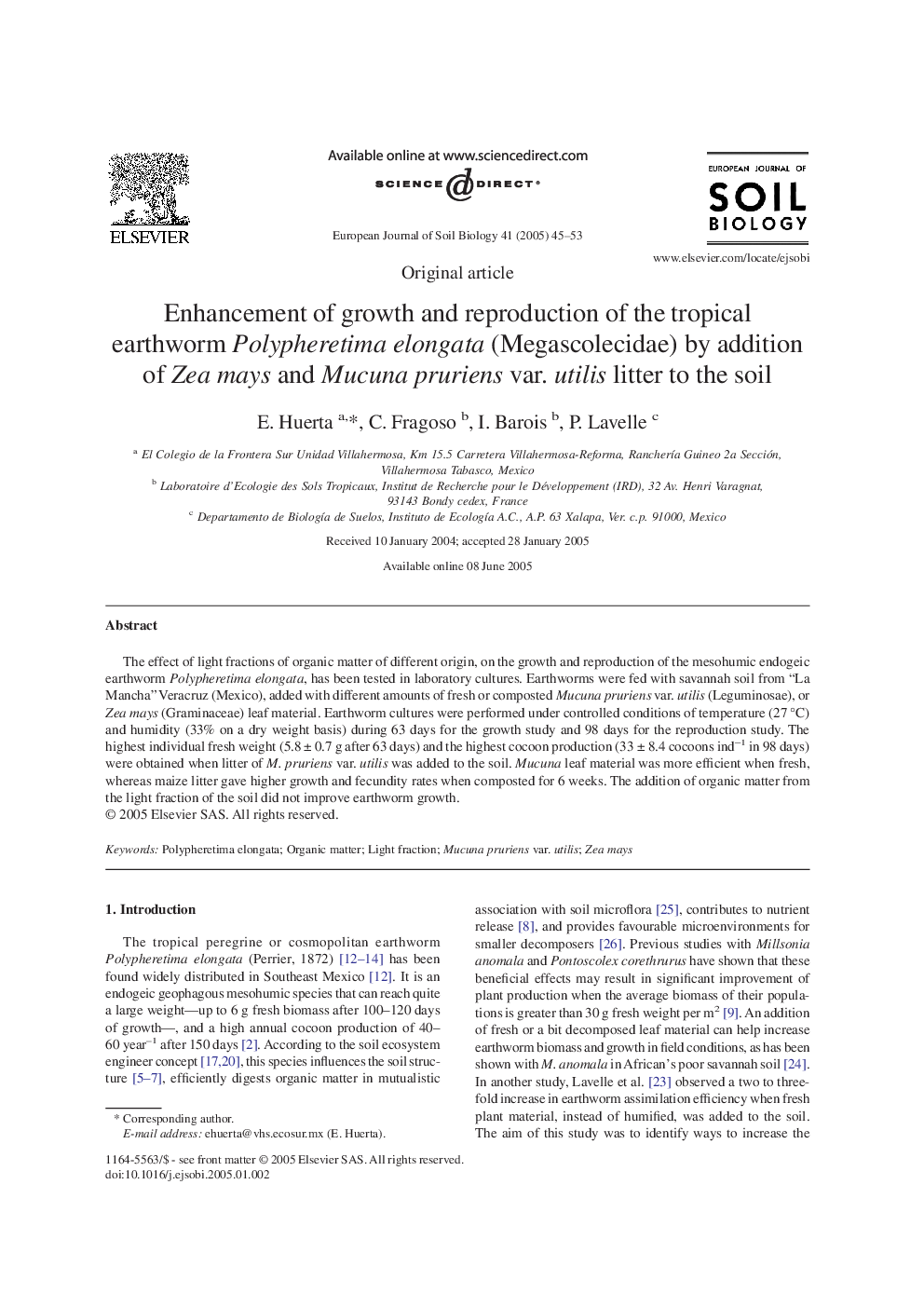| Article ID | Journal | Published Year | Pages | File Type |
|---|---|---|---|---|
| 10110183 | European Journal of Soil Biology | 2005 | 9 Pages |
Abstract
The effect of light fractions of organic matter of different origin, on the growth and reproduction of the mesohumic endogeic earthworm Polypheretima elongata, has been tested in laboratory cultures. Earthworms were fed with savannah soil from “La Mancha” Veracruz (Mexico), added with different amounts of fresh or composted Mucuna pruriens var. utilis (Leguminosae), or Zea mays (Graminaceae) leaf material. Earthworm cultures were performed under controlled conditions of temperature (27 °C) and humidity (33% on a dry weight basis) during 63 days for the growth study and 98 days for the reproduction study. The highest individual fresh weight (5.8 ± 0.7 g after 63 days) and the highest cocoon production (33 ± 8.4 cocoons indâ1 in 98 days) were obtained when litter of M. pruriens var. utilis was added to the soil. Mucuna leaf material was more efficient when fresh, whereas maize litter gave higher growth and fecundity rates when composted for 6 weeks. The addition of organic matter from the light fraction of the soil did not improve earthworm growth.
Related Topics
Life Sciences
Agricultural and Biological Sciences
Soil Science
Authors
E. Huerta, C. Fragoso, I. Barois, P. Lavelle,
